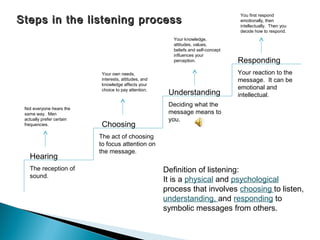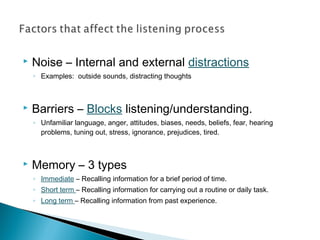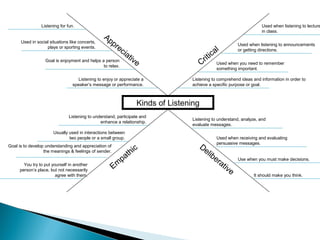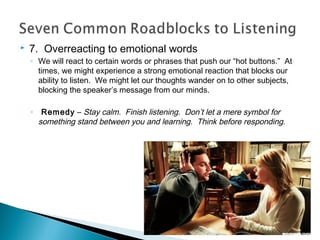The document provides information on listening and its importance. It states that while the average person spends 45% of their communication time listening, they typically only remember 25% of what they hear. Good listening skills are important for success in school, relationships, careers and decision making. The document outlines the steps in the listening process and discusses the differences between hearing, choosing to listen, understanding and responding to messages. It also discusses types of listeners and barriers to effective listening.
















